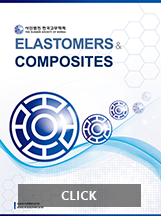Research and Publication Ethics
Authors are expected to adhere to the following guidelines:
1. An author’s central obligation is to present an accurate account of the research performed as well as an objective discussion of its significance.
2. An author should recognize that journal space is a precious resource created at considerable cost.
3. A primary research report should contain sufficient detail and reference to public sources of information to allow the author’s peers to repeat the work.
4. An author should cite publications that have been influential in determining the nature of the reported work thus guiding the readers easily to the earlier work that is essential for understanding the present investigation.
5. Any unusual hazards inherent in the chemicals, equipment, or procedures used in an investigation should be clearly identified in a manuscript reporting the work.
6. A scientist who has done extensive work on a system or group of related systems should organize publication so that each report gives a well-rounded account of a particular aspect of the general study.
7. In submitting a manuscript for publication, an author should inform the editor of related manuscripts that the author has under editorial consideration or in press. Copies of those manuscripts should be supplied to the editor, and the relationships of such manuscripts to the one submitted should be indicated.
8. It is improper for an author to submit manuscripts describing essentially the same research to more than one journal of primary publication, unless it is a resubmission of a manuscript rejected for or withdrawn from publication. It is generally permissible to submit a manuscript for a full paper expanding on a previously published brief preliminary account of the same work. However, at the time of submission, the editor should be made aware of the earlier communication, and the preliminary communication should be cited in the manuscript.
9. An author should identify the source of all information quoted or cited, except that which is common knowledge. Information obtained privately, as in conversation, correspondence, or discussion with third parties, should not be used or reported in the author’s work without explicit permission from the investigator with whom the information originated.
10. An experimental or theoretical study may sometimes justify criticism, even severe criticism, of the work of another scientist. When appropriate, such criticism may be offered in published papers.
11. The co-authors of a paper should be all those persons who have made significant scientific contributions to the work reported and who share responsibility and accountability for the results. Other contributions should be indicated in a footnote or an “Acknowledgments” section. An administrative relationship to the investigation does not qualify a person for co-authorship. Deceased persons who meet the criterion for inclusion as co-authors should also be included, with a footnote reporting date of death. No fictitious name should be listed as an author or co-author. The author who submits a manuscript for publication accepts the responsibility of having included as co-authors all persons appropriate and none inappropriate.
12. The authors should reveal to the editor and to the readers of the journal any potential and/or relevant competing financial or other interest that might be affected by publication of the results contained in the authors’ manuscript. Sources of funding of the research reported should be clearly stated.







